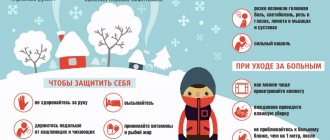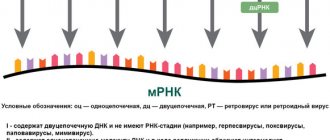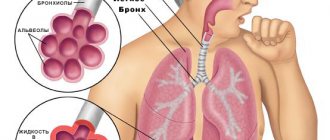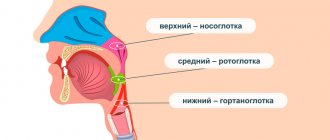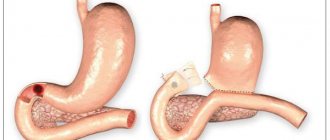Features of infection and symptoms
Most often, the development of acute respiratory infections occurs against the background of infection with viruses or bacteria. The infection is transmitted by airborne droplets or by contact when in public places or when personal hygiene rules are not observed. Once on the mucous membranes of the respiratory system, pathogens multiply and cause unpleasant symptoms against a background of general malaise.
Pronounced signs of acute respiratory infections usually appear a couple of days after infection. This:
- A sore throat.
- Sneezing.
- Headache.
- Loss of appetite.
- Runny or stuffy nose.
Treatment should begin when the first symptoms appear. ARI at the initial stage of development can be successfully treated with modern medications. Otherwise, the intensity of the symptoms will increase, in addition, the body temperature will rise, fever will occur, and the lymph nodes will enlarge, which will lead to a deterioration in the general condition. Against this background, there are risks of developing complications and the need for treatment in a hospital setting.
Flu - symptoms and treatment
Influenza (Grippus Influenza, flu ) is an acute infectious disease caused by various serotypes of the influenza virus, which primarily affects the epithelial cells of the trachea. It is characterized by a pronounced syndrome of general infectious intoxication, tracheitis and, in some cases, hemorrhagic manifestations, and tends to take on an epidemic course. The epidemic may have a negative impact on the economy through loss of labor productivity and place undue strain on health services.
Etiology
The influenza virus belongs to the kingdom Viruses, the subkingdom RNA viruses, and the family Orthomyxoviridae. Includes several genera: A (human individual, birds, mammals), B (human), C (human).
The first description of the manifestations of influenza was made in 1403 by the Frenchman Etienne Pasquier. The type A virus was discovered in 1933 by scientists Smith and Lendow.
What influenza pathogens cause epidemics?
There are four types of seasonal influenza viruses: A, B, C and D. Seasonal epidemics are caused by influenza viruses A and B [12].
Influenza virus antigens
The heterogeneity of the virus is due to the variability of internal and surface antigens. Internal antigens (core - S) are viral RNA + protein. They are type-specific, i.e., on their basis, viruses are classified into serotypes (A, B, C). Surface antigens (glycoprotein - V) include hemagglutinin (H), which is responsible for the penetration of the virus into the cell (binding with a specific receptor) and neuraminidase (N), which is responsible for the release of viral particles from the affected cell. In addition, the virus contains 7 main proteins responsible for the life of the virus (M1, M2, NS1, NS2, RV1, RV2, NP)[1].
Epidemiology
Every year, at least 900 million people get sick with influenza, of which 3-5 million cases develop a severe form. Up to 650 thousand people die from influenza every year [12]. Influenza occurs periodically throughout the world, and anyone of any age can get it. The source of the infectious onset is a sick person with clinically obvious and atypical (implicit) styles of manifestation of the disease. The greatest infectiousness is observed during the first three days from the onset of clinical manifestations.
How long do you have the flu?
Isolation of the pathogen and duration of the disease in the uncomplicated form is 6-7 days (rapid formation of immunity and elimination of the virus), in severe and complicated forms - up to three weeks. This is characterized by a slow formation of immunity, including due to the possible initial weakening of protective mechanisms (comorbidities, age).
Main routes of infection
The transmission mechanism is airborne droplets (aerosol route), contact route is possible (when using shared utensils, kissing, contaminated hands). Autumn-winter seasonality with an epidemic component is quite typical, repeating at approximately the same interval. Sporadic (random) incidence is observed at any time of the year. It is noteworthy that the debut of a global epidemic outbreak, as a rule, geographically occurs in the countries of East Asia, which is partly explained by the year-round sporadic incidence in these regions, special climatic conditions favorable for maintaining the circulation and modification of viruses [1][2][5 ].
What are the risk factors?
Factors that increase the likelihood of getting the flu:
- crowded population;
- cold season;
- neglect of preventive measures.
The following are at increased risk of severe influenza and the development of complications:
- people over 65 years of age;
- children under 2 years old;
- pregnant women;
- HIV-infected people in the AIDS stage;
- patients with bronchial asthma;
- patients with serious diseases of the cardiovascular system;
- patients with diabetes mellitus;
- patients with severe mobility limitations;
- cancer patients;
- patients with severe kidney disease.
How to distinguish the flu from a cold
Because colds and flu share many symptoms, it can be difficult (or even impossible) to tell them apart based on symptoms alone. Special tests can help you reliably determine whether a person has the flu. In general, colds are milder than the flu and usually do not lead to serious complications such as pneumonia. Patients with colds are more likely than patients with influenza to experience runny nose and nasal congestion [13].
Types of drugs for the treatment of acute respiratory infections
The choice of medications for the treatment of acute respiratory infections depends on the type of infection and the severity of the disease. Only a doctor can choose the right medications based on an examination of the patient. The following drugs can be used:
- Antiviral. They destroy the virus and prevent its spread in the body.
- Symptomatic. Their goal is to relieve symptoms of the disease, which allows stabilizing the general condition.
- Immunostimulating. When used, the body's natural defense reactions are enhanced, which increases the effectiveness of treatment.
Antiviral drugs
Antiviral drugs can speed up the treatment of acute respiratory infections and prevent the development of complications. They should be taken immediately after the first symptoms of the disease appear. All antiviral agents additionally have an immunostimulating effect.
The most commonly used medications are:
- Amiksin. The drug is intended for the treatment of adults. The active ingredient tiloron significantly enhances the functioning of the immune system.
- Arbidol. The active substance umifenovir has a negative effect on various types of viruses. The drug improves the body's resistance to infections and reduces the intensity of symptoms. The medicine has no age-related contraindications.
- Kagocel. The medicine is made from natural raw materials. It stimulates the body's antiviral activity and can be used as a prophylactic during the spread of seasonal infections.
All antiviral drugs have contraindications. They should be used with caution during pregnancy and lactation. The therapeutic dosage is indicated by the manufacturer in the instructions for use, but it can be changed by the doctor depending on the severity of the disease.
Remedies against high temperature
A common symptom of acute respiratory infections is high fever. It is necessary to take antipyretic drugs only when the readings rise above 38 degrees.
The following medications are considered the most effective:
- Paracetamol. The drug belongs to the group of antipyretics and has a pronounced analgesic, antipyretic and anti-inflammatory effect. With long-term use, it is necessary to monitor blood counts.
- Aspirin. An anti-inflammatory and analgesic that can quickly reduce fever. There are certain indications for its use, so caution should be exercised when taking it.
Educational program on ARVI
During the “cold season,” all parents have many questions related to the prevention and treatment of ARVI in children. Today we will try to understand this vast topic with the help of a brief educational program.
What is the difference between a cold and ARVI?
The common cold is the colloquial name for acute respiratory infections (ARI). In most cases (up to 95%) acute respiratory infections are caused by various viruses, that is, they are acute respiratory viral infections. In this regard, colds and ARVI are the same concept.
How to treat ARVI in a child?
In fact, ARVI does not require treatment. At the moment, there are no medicines for viruses that have entered the child’s body (with the exception of the herpes virus and influenza virus, but they are other diseases). A child’s body is able to cope with the disease on its own in about 7 days. The main task of parents is to help their child overcome the disease by alleviating unpleasant symptoms.
What to do with the temperature?
A high temperature should only be brought down if it causes discomfort to the child. In childhood, it is permissible to use only two types of antipyretics - paracetamol and ibuprofen. Attention! Aspirin should not be taken by children under 18 years of age. It is also unacceptable to reduce the temperature by rubbing the child’s body with alcohol.
Cold extremities in the heat are an absolutely normal reaction of the body that do not require taking NO-spa. There is no point in wrapping a child up to make him “sweat.”
What to do with a runny nose?
The main task with a runny nose is to create optimal conditions for thinning mucus and removing it from the nose. To do this, you need to monitor the air humidity in the children's room (should be 50-60%). It is better to use a humidifier and do not forget to regularly ventilate the room. The nasal mucosa is moistened with saline solutions, and excess mucus is removed with a nasal aspirator.
What to do about a cough?
Children should never be given cough medicine without a doctor's prescription. Also, you should not carry out inhalations with a nebulizer without consulting a specialist. You can ease the cough by giving your child 1 teaspoon of honey 30 minutes before bedtime (honey can only be given to children over 1 year of age due to the risk of developing botulism).
You need to understand that all of the above symptoms are the body’s defensive reaction to the invasion of infection. You should not set yourself the goal of getting rid of these manifestations by any means!⠀
Drugs that have no effectiveness in the treatment of ARVI
- homeopathic medicines;
- antiviral and immunomodulatory agents;
- traditional medicine - garlic, onion, echinacea, badger fat, etc.
Using cans and mustard plasters carries the risk of burns!
Note to parents
Antibiotics only act on bacteria, therefore, in case of a viral infection, there is no point in taking them. These drugs are prescribed only according to indications, and not “on the third day of illness” or “to avoid complications.”
There is no need to restrict your child from bathing and walking if he has a cold (provided he is in good health). On the contrary, a little physical activity helps ease the passage of mucus from the lungs, and a good mood has a positive effect on the well-being of children.
There is no need to force-feed a child when he is ill: ARVI is often accompanied by a decrease in appetite. You just need to make sure you have enough fluid intake!
And finally...
Don't blame yourself for your child's illness. He simply encountered viruses - and this is inevitable when being in society. Children can get sick quite often (up to 8-12 times a year) and there is nothing to worry about. Timely vaccination and maintaining a healthy lifestyle will help prevent the development of complications.
Do not stuff your child with unnecessary medications and try to find a competent pediatrician who will prescribe adequate treatment. Do not quarrel with those close to you who are trying to give advice that is not always useful - they are also worried about the child and want to do what is best. In any case, the decisions regarding your baby’s treatment are yours alone.
